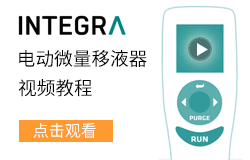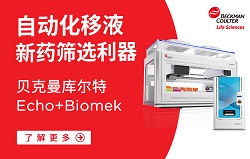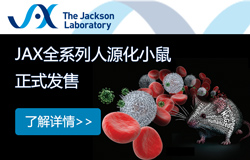基于epMotion 5075t及KAPA文庫定量試劑盒的全自動NGS文庫定量操作
在測序前對NGS文庫進行定量是獲得可靠結果、優化測序表現的重要基礎。本篇應用展示了epMotion 5075t液體工作站出色的性能,以高精確性和出色的準確度按照KAPA的文庫定量試劑盒的操作要求完成整個qPCR分析。
Automated KAPA® Library Quantifcation Kit with the epMotion® 5075t
Maud Brasseur¹, Jennifer Pavlica², Marsha McMakin², Sandrine Hamels¹
¹Eppendorf Application Technologies S.A., Namur, Belgium
²Roche Sequencing & Life Science, Wilmington, USA
Abstract
Next-Generation Sequencing (NGS) is a high-throughput method that enables highly parallelized sequencing of multiple libraries, prepared from both DNA and RNA samples. Bolstered by growing applications, such as the whole genome, whole exome, and gene expression analyses, NGS is gaining importance and becoming a standard procedure in many laboratories.
The quantifcation of NGS libraries prior to sequencing is essential to obtain reliable results and optimal sequencing performance. This Application Note demonstrates the capability of the epMotion 5075t liquid handling system to automate with high accuracy and high precision a complete qPCR assay setup using the KAPA Library Quantifcation Kit including library dilution steps.
Introduction
Accurate and precise quantifcation of the number of amplifable molecules in a library is an essential step in sequencing workflows. It ensures consistent and optimal cluster densities, as well as equivalent representation of each library when sequencing in multiplex. Inaccurate
quantifcation can result in decreased sequence quality metrics, inefcient flowcell use, and additional sequencing required for underrepresented samples – all of which translates to wasted time and money.
A quantitative PCR (qPCR) approach, such as the KAPA Library Quantifcation Kit, is the gold standard for NGS library quantifcation and is the only method that accurately measures the number of amplifable molecules that have the ability to cluster. Additionally, this method has the sensitivity and broad dynamic range for accurate quantifcation of very
dilute and PCR-free libraries.
Performing an accurate qPCR assay manually in a high throughput setting becomes difcult and time consuming, and the use of an automated liquid handling platform is strongly recommended to reduce the risk of human error and increase the reliability of results. The Eppendorf epMotion® family of automated pipetting systems is an essential tool for many laboratories looking to achieve consistent results. The epMotion 5075t and other models in the Eppendorf family pipette volumes ranging from 0.2 µL to 1 mL with efciency and accuracy.
The reliability of qPCR results is highly related to the accuracy and precision of liquid handling in both reaction setup and library dilution. Accuracy and precision are two terms that are often used interchangeably, but are actually differentiated. Accuracy refers to how close a measurement is to a true value, while precision refers to how close repeat measurements are to each other and is thus a measure of reproducibility. This Application Note presents experimental results aimed at verifying the accuracy and precision of the KAPA Library Quantifcation Kit processed on the epMotion 5075t compared to manual handling.
Materials and Methods
Materials
qPCR – Accessories
> LightCycler® 480 Sealing Foil (Roche, cat # 04 729 757 001)
> LightCycler® 480 Instrument, 96-well (Roche, cat # 05 015 278 001)
> Centrifuge MiniSpin®, non-refrigerated, with Rotor F-45-12-11, 230 V/50 – 60 Hz (Eppendorf, cat # 5452000010)
> Centrifuge 5810 R (IVD), refrigerated, without rotor, keypad, 230 V/50 – 60 Hz (Eppendorf, cat # 5811000015) qPCR – Reagents
> KAPA Library Quantifcation Kit for Illumina® platforms (KAPA Biosystems, cat # 07960336001)
> KAPA Library Quantifcation Dilution Control Kit for Illumina® platforms (KAPA Biosystems, cat # 07960417001)
> UltraPure™ 1M Tris-HCl, pH 8.0 (Thermo Fisher®, cat # 15568025) > Water, Sterile, Nuclease-free, Biotechnology Grade (VWR, cat # E476)
Methods
KAPA Library Quantifcation Kit contains all reagents required for quantifcation of NGS libraries for Illumina® sequencing, including KAPA SYBR® FAST qPCR Master Mix (2X), a Primer PreMix (10X) containing two primers based on Illumina P5 and P7 oligo sequences (Primer 1: 5’-AAT GAT ACG GCG ACC ACC GA-3’ and Primer 2: 5’-CAA GCA GAA GAC GGC ATA CGA-3’) and six ready-to-use DNA standards corresponding to a 10-fold dilution series. Standards consist of a linear, 452 bp dsDNA fragment flanked by qPCR primer binding sites. A KAPA Library Quantifcation Dilution Control, referred to asDNA Standard 0, is a 200 pM solution of the same linear, 452 bp dsDNA fragment. It is available for purchase separately and can be used to characterize impact of liquid handling on assay accuracy.
The epMotion was programmed to perform NGS library sample dilution and qPCR setup in one method. Reactions were set up according to Table 1 and thermocycled according to Table 2 using a LightCycler® 480 instrument (96 well). Template-free negative controls were included.
Manual and automated standard curves were generated using triplicate reactions for each standard. epMotion sample dilution accuracy was assessed using DNA Standard 0 diluted 1:10,000, as well as two NGS libraries diluted 1:10,000; 1:100,000; and 1:1,000,000. The same stock of reagents and samples were used in both manual and automated processes. The qPCR plate layout is illustrated on Figure 1.
Figure 1: qPCR plate layout.
Figure 2: epMotion 5075t worktable for sample dilution and qPCR setup with the KAPA Library Quantifcation Kit for Illumina® platforms.
Before starting the program, the epMotion surfaces and tools were cleaned using a DNA decontamination solution “DNA Erase” and treated with UV-light for 15 minutes. The work table of epMotion 5075t instrument is equipped as in Figure 2.
Automated qPCR Setup Accuracy and Precision
The accuracy and precision of the qPCR setup was evalu ated based on standard curve analysis (Figure 3). Amplifca tion efciency is equivalent between automated (95%) and manual (94%) setup, and both values are within the acceptable range of 90 – 110%. The coefcient of variation (R²) obtained for the two liquid handling methods is similar with a value of 1.00, meeting the minimum requirement of 0.99. For standards on the automated standard curve, the standard deviation of Cq values between triplicate data points was less than 0.1, translating to a coefcient of varia tion less than 0.4%. This indicates that any quantifcation data obtained is accurate, assuming accurate and precise library dilution.
Automated Sample Dilution Accuracy and Precision
Standard 0 was diluted to 1:10,000 by two consecutive 1:100 dilutions either manually or with an automated process. The average pM value of the automated Standard 0 reactions (216 pM) is similar to the average pM value of the manual reactions (222 pM) showing equivalency of the automated sample dilution process on the epMotion (Figure 4).
Additionally, the automated process resulted in an estimated Standard 0 concentration of 216 pM, which deviates from the expected value of 200 pM by less than 10%. The low standard deviation (CV of 1.4%) among the twelve replicates shows high precision and highlights the reliability of the automated sample dilution process.
Performance was further evaluated using two Illumina NGS libraries diluted in series (1:10K, 1:100K, 1:1M) with four replicates per data point. As expected for a 10-fold dilution series, the Delta Cq values between the different dilution factors were within the acceptable range of 3.1 to 3.6. The Cq standard deviation of both NGS libraries does not exceed 0.2% showing high reproducibility (Figure 5).
Conclusions
The automation of the KAPA Library Quantifcation Kit on the Eppendorf epMotion 5075t offers a solution for high throughput quantifcation, reducing hands-on time and human error with a total runtime of only 28 minutes for the here presented setup. The Eppendorf epMotion liquid han dling systems have the advantage of having a user friendly interface, with flexible options for modifying the number of libraries, the number of qPCR replicates, and the dilution factor to desired experimental design with a maximum of 72 reactions per plate. Reliable, optimized and ready-to-use epMotion methods are available for small epMotion mod els such as the epMotion 5073 and larger sizes such as the epMotion 5075. The presence of a thermo-module on the worktable keeps the qPCR plate refrigerated during process ing, and detection of tip and consumable positions before run start allows reliable processing without incident.
  |





